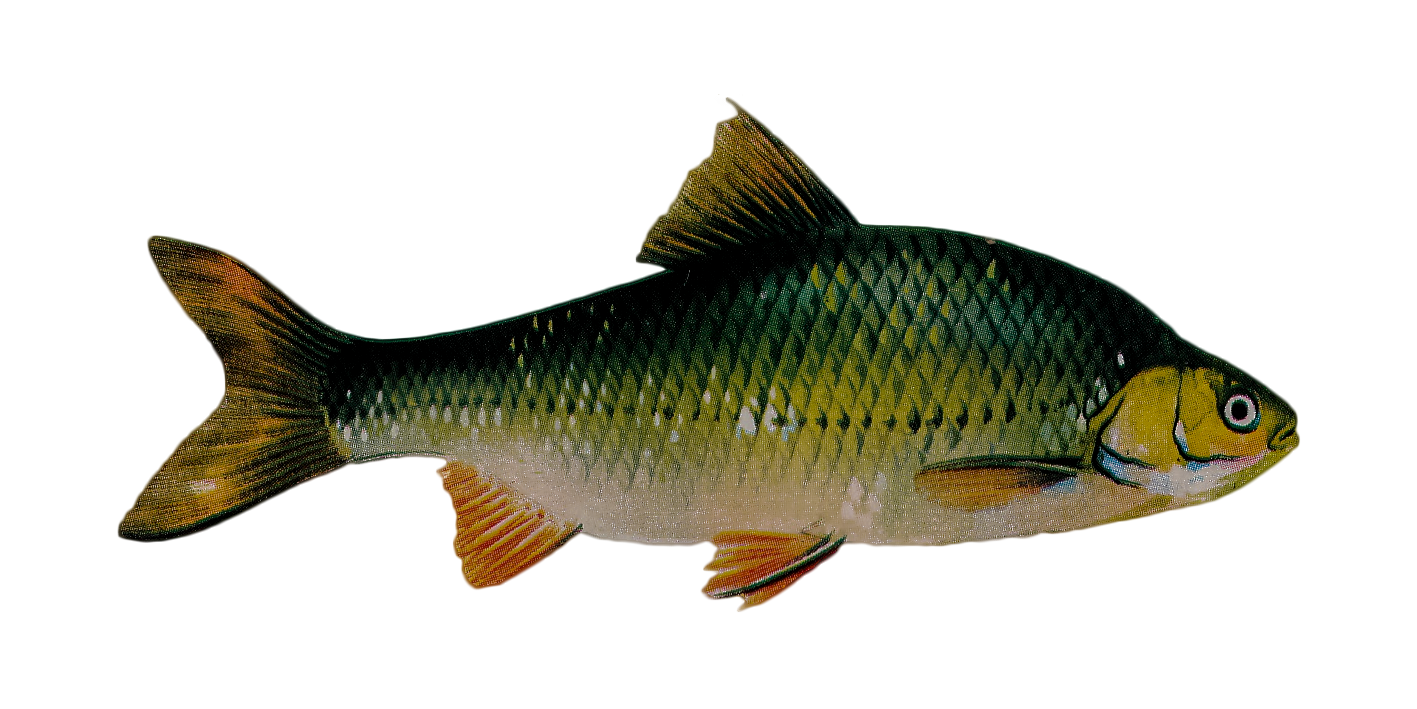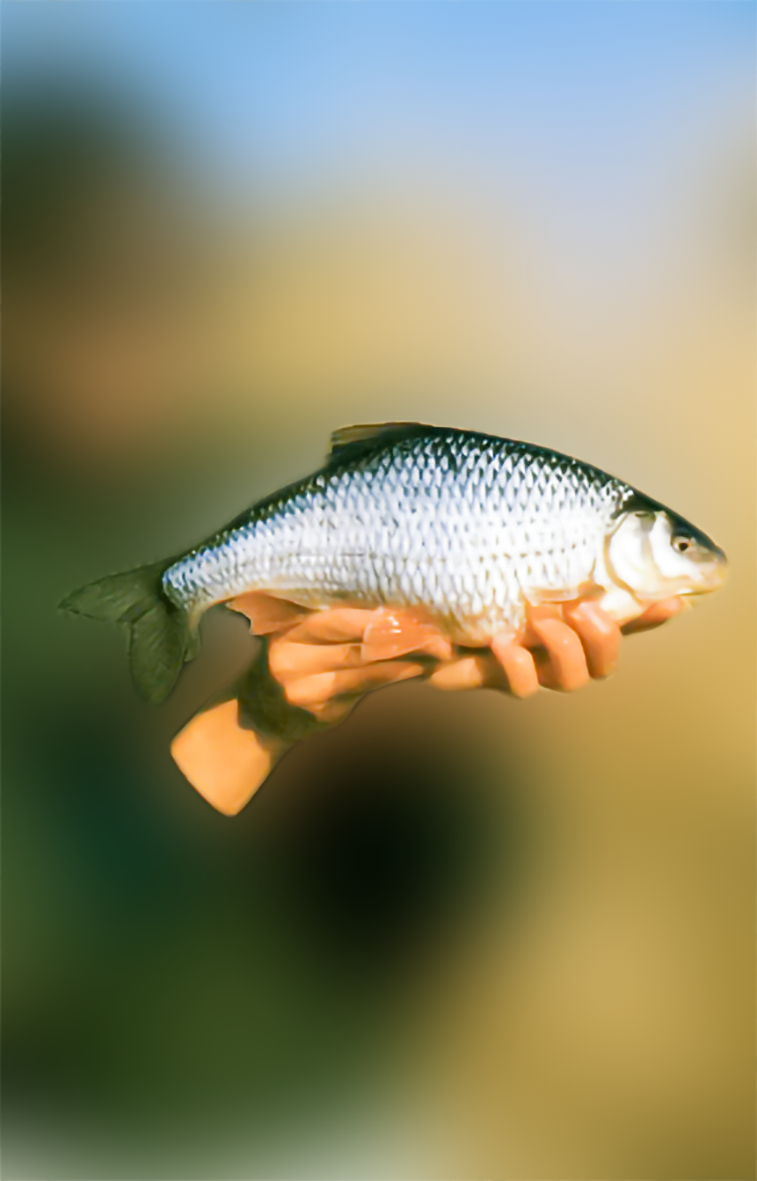

"Its tolerance of moderate pollution and low levels of dissolved oxygen has helped the roach thrive".
The Roach is now one of the most abundant lowland fish in England.

Roach (Rutilus rutilus)
Average Weight - Roach do not reach the large sizes attained by other coarse fish, a fish of 2 lbs (0.9 kg) would be considered a fantastic specimen.
Distribution - Roach are widespread throughout England, the Roach is not as common in either Wales or Scotland where the rivers tend to be too fast and the water too acidic. The Roach is not native to Ireland but has spread rapidly from the waters where it was first introduced.
The inexperienced may be forgiven for failing to distinguish the Roach from the Rudd.
Judging from the numbers of hybrids between the two species, the fish themselves find identification difficult. Both have large scales and greenish backs but the flanks of the Roach are silvery whereas the Rudd has a golden sheen.
Roach-Bream crosses are also quite common, as are hybrids with Chub and Bleak.


You must take care when
unhooking and returning Roach to the water as they are rather fragile.
Make
sure your hands are wet or you will damage the fishes scales.

A lovely 2 1/2 lb (1. 1kg) Roach in beautiful condition.
Roach are widespread throughout England but are much less common in Wales, Scotland and Ireland.
They prefer slow moving rivers and still waters but are also found in faster flowing rivers that are reasonably deep. They do not do well in fast, shallow streams. They are a fairly tolerant species and can even be found in quite barren or polluted waters.
In some waters Roach are not subject to much predation and this can lead to overcrowding, with large numbers of small Roach up to about 4oz (113g). Stunting can also occur in acid waters that are poor in nutrients.
In reservoirs, gravel pits and chalk streams which are nutrient rich and where Pike, Perch and Trout tend to reduce numbers, the Roach are far fewer but larger.
It is at waters like these that specimen and record Roach can be caught. On average it takes about nine or ten years for Roach to reach full size though this does depend on the availability of food.

Very big roach can be timid and difficult to approach. In waters rich in natural food supplies they do not feed openly in daylight, usually only feeding heavily at dusk and into the night.
Spawning takes place in the shallows between April and June, the
yellowish eggs sticking to plants and stones.
Roach are prolific, averaging
20,000 eggs per 1lb (0.45kg) of body weight - another reason they are so
widespread.
With a mild spring, spawning takes place early and a greater number
of the fry survive.
Usually, though, this simply means that there is more food available for the predators.
In common with many other members of the Carp family, male Roach often develop grey-white warty lumps on the head (and occasionally the body) before spawning. These are known as Tubercles and are about the size of a pinhead. Males can only be easily distinguished from females when these lumps are present.
